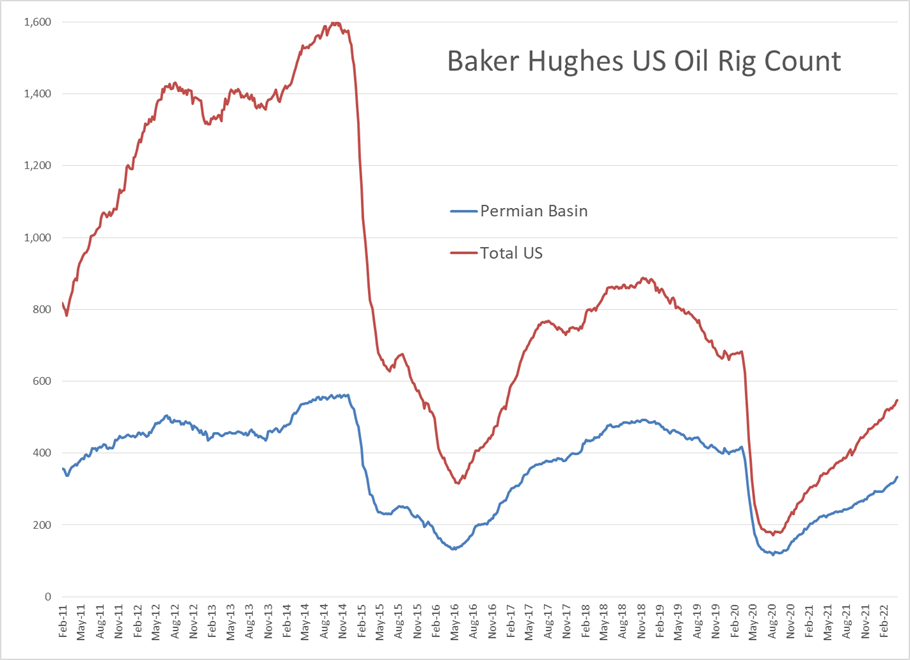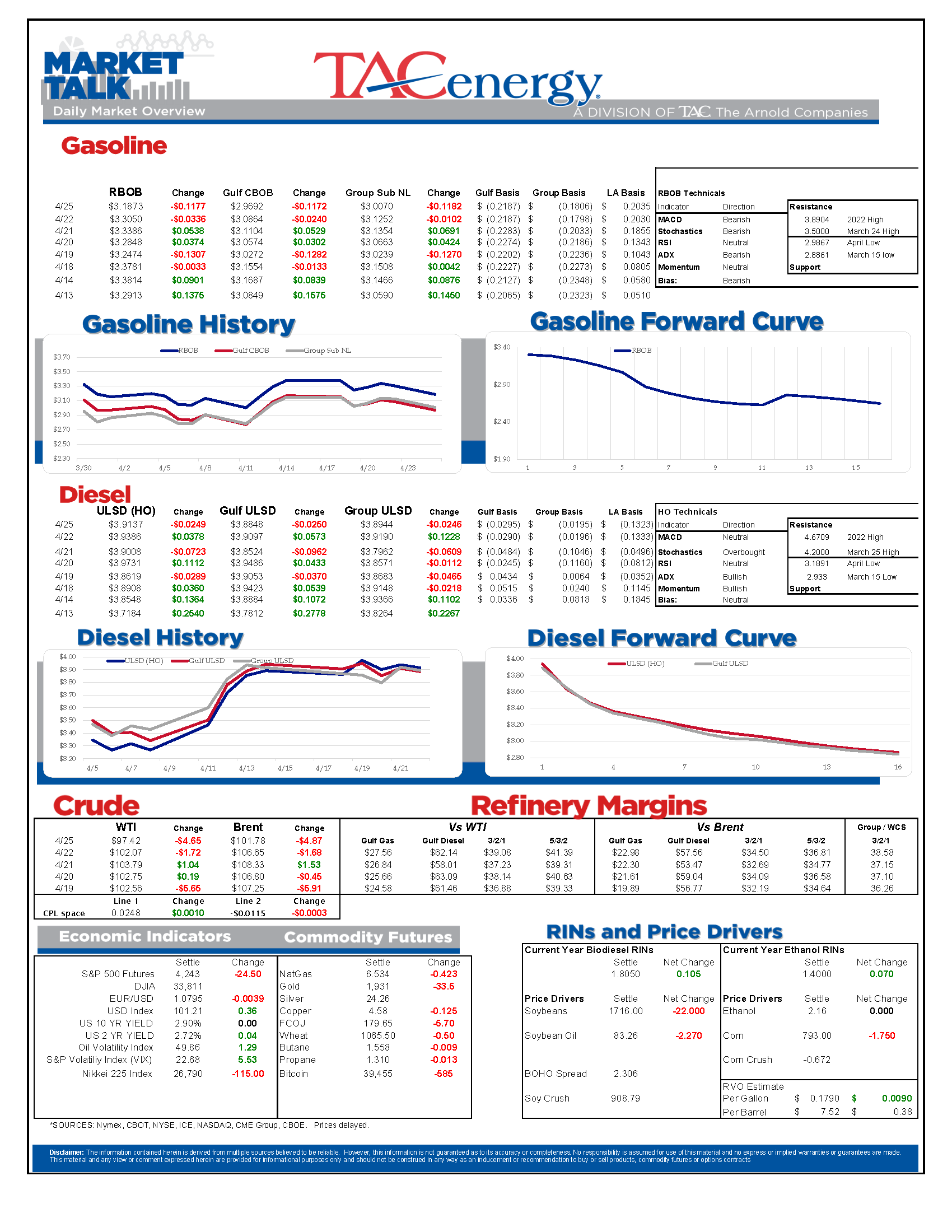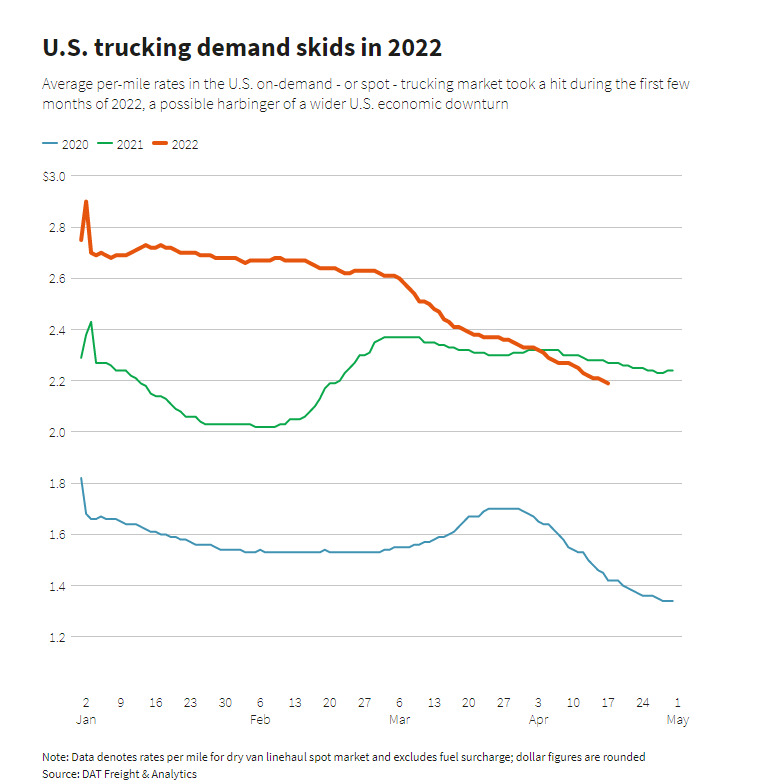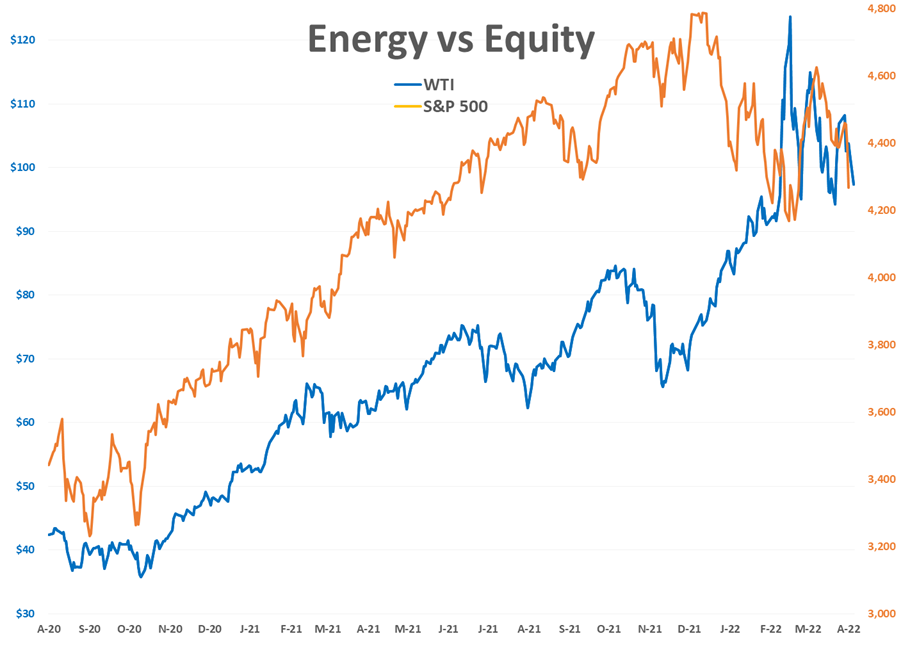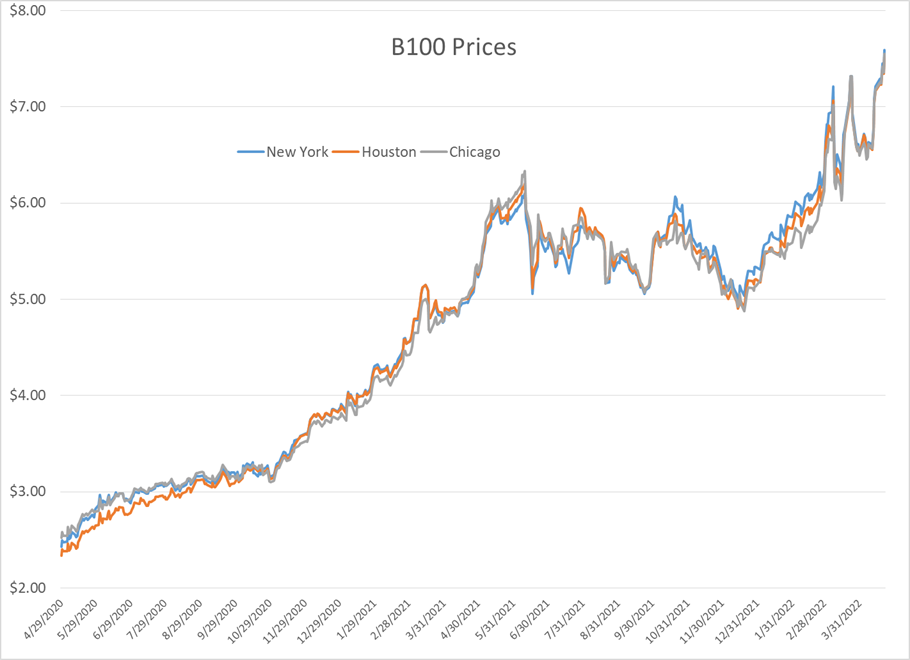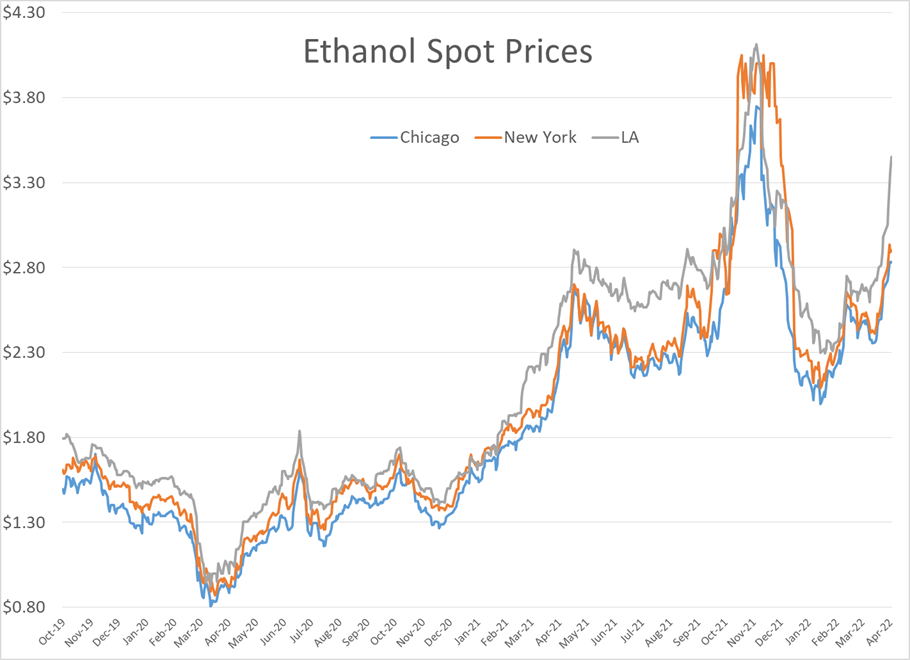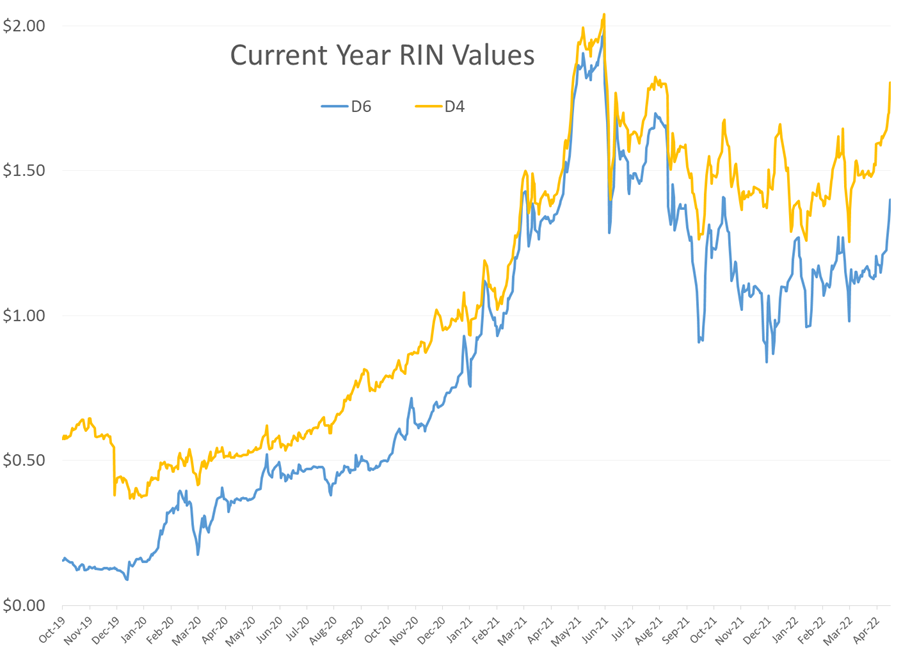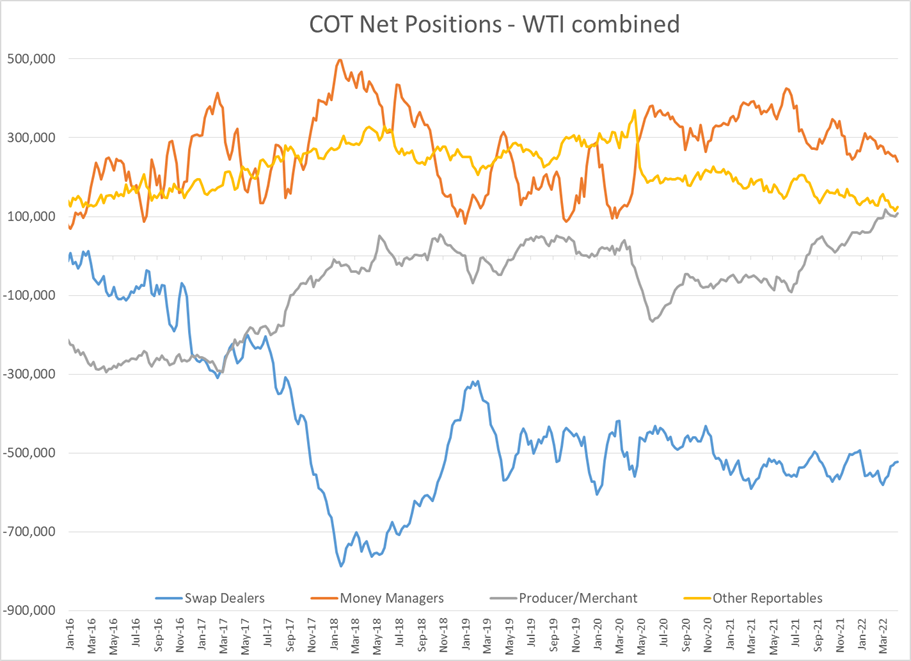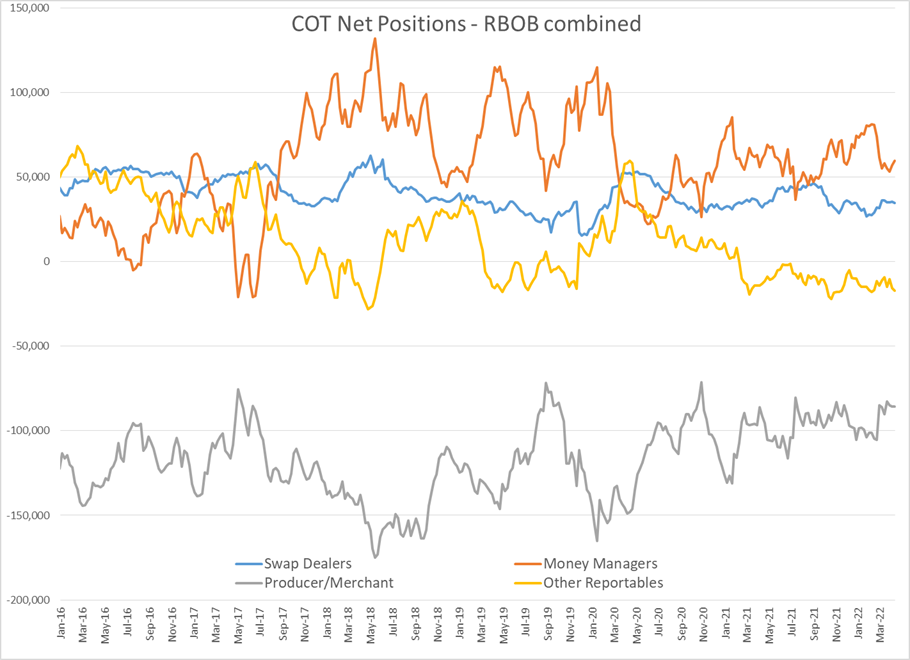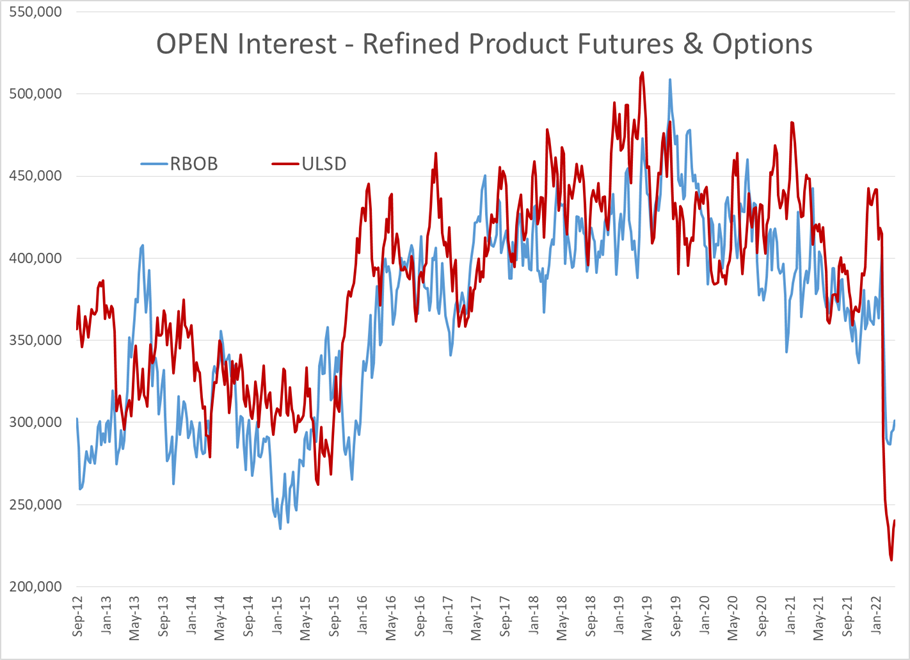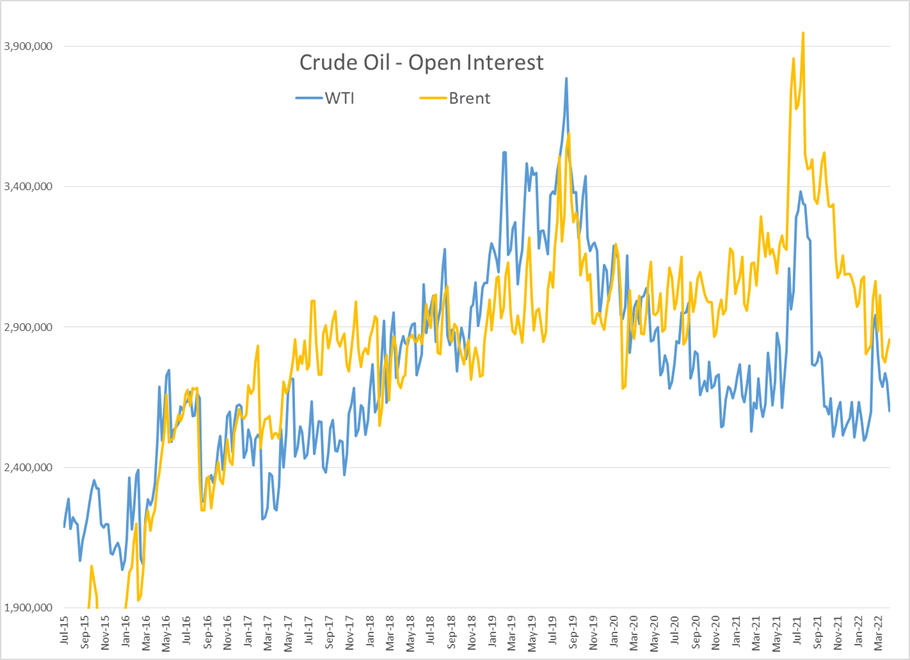A Heavy Wave Of Selling Hit Energy Markets To Start The Week

A heavy wave of selling hit energy markets to start the week, as more demand fears seem to be driving a risk-off stance in markets around the world.
Beijing started mass COVID testing, which sparked fears that another one of the world’s largest cities would be locked down. Already the lockdowns in Shanghai have pushed Chinese oil consumption down an estimated 20% in April.
Slowing consumption is not just an international story anymore. A slowdown in US trucking demand is a concerning leading indicator for some, and a welcome change for others after more than a year of severe shortages in trucking capacity.
While demand fears are grabbing the headlines, supply shortages have not gone away yet, and we’re seeing more evidence of that today in diesel markets, both traditional and renewable. While most of the NYMEX futures contracts are seeing double digit losses this morning, May ULSD is down less than 3 cents, and trading nearly 36 cents above its June counterpart. Think about that for a second, diesel prices are worth more than 1 cent less every day in the near future given this extreme backwardation.
Biodiesel prices are surging to new record highs, and their RINs have rallied to their highest levels in more than 8 months last week, while ethanol & its RINs follow close behind. Indonesia announced a ban on palm oil exports to protect its domestic food supply, which sent shockwaves through the food and fuel oil industries which were already reeling from the war and weather-related supply restrictions. There was some relief this morning as the government clarified that the export ban only applied to processed oils, leaving crude palm oil available for export, for now.
Money managers continue to take a cautious approach to energy contracts, with short covering by speculators pushing net length in Brent higher, while new shorts in WTI decreased the net bet on higher prices. Refined products also saw minimal changes on the week, and continue to see extremely low levels of open interest as risk managers apparently still telling traders “don’t touch that” after the record shattering volatility in March.
Baker Hughes reported a net increase of 1 oil rig and 1 natural gas rig drilling in the US last week. North Dakota took credit for the increase this week, giving Texas a week off as it prepares for a new boom cycle after record setting permitting in the region last month.
There were a pair of noteworthy refinery fires over the weekend. One outside of New Orleans sent 8 workers to the hospital but is not expected to have a major impact on fuel supplies as the facility was in the midst of shutting down for planned maintenance. The other at an “illegal” refinery in Nigeria is reported to have killed more than 100 people in a shocking reminder of how desperate some countries are for fuel.
Click here to download a PDF of today's TACenergy Market Talk.
Latest Posts
Gasoline Futures Are Leading The Way Lower This Morning
The Sell-Off Continues In Energy Markets, RBOB Gasoline Futures Are Now Down Nearly 13 Cents In The Past Two Days
Week 15 - US DOE Inventory Recap
Prices To Lease Space On Colonial’s Main Gasoline Line Continue To Rally This Week
Social Media
News & Views
View All
Gasoline Futures Are Leading The Way Lower This Morning
It was a volatile night for markets around the world as Israel reportedly launched a direct strike against Iran. Many global markets, from equities to currencies to commodities saw big swings as traders initially braced for the worst, then reversed course rapidly once Iran indicated that it was not planning to retaliate. Refined products spiked following the initial reports, with ULSD futures up 11 cents and RBOB up 7 at their highest, only to reverse to losses this morning. Equities saw similar moves in reverse overnight as a flight to safety trade soon gave way to a sigh of relief recovery.
Gasoline futures are leading the way lower this morning, adding to the argument that we may have seen the spring peak in prices a week ago, unless some actual disruption pops up in the coming weeks. The longer term up-trend is still intact and sets a near-term target to the downside roughly 9 cents below current values. ULSD meanwhile is just a nickel away from setting new lows for the year, which would open up a technical trap door for prices to slide another 30 cents as we move towards summer.
A Reuters report this morning suggests that the EPA is ready to announce another temporary waiver of smog-prevention rules that will allow E15 sales this summer as political winds continue to prove stronger than any legitimate environmental agenda. RIN prices had stabilized around 45 cents/RIN for D4 and D6 credits this week and are already trading a penny lower following this report.
Delek’s Big Spring refinery reported maintenance on an FCC unit that would require 3 days of work. That facility, along with several others across TX, have had numerous issues ever since the deep freeze events in 2021 and 2024 did widespread damage. Meanwhile, overnight storms across the Midwest caused at least one terminal to be knocked offline in the St. Louis area, but so far no refinery upsets have been reported.
Meanwhile, in Russia: Refiners are apparently installing anti-drone nets to protect their facilities since apparently their sling shots stopped working.
Click here to download a PDF of today's TACenergy Market Talk.

The Sell-Off Continues In Energy Markets, RBOB Gasoline Futures Are Now Down Nearly 13 Cents In The Past Two Days
The sell-off continues in energy markets. RBOB gasoline futures are now down nearly 13 cents in the past two days, and have fallen 16 cents from a week ago, leading to questions about whether or not we’ve seen the seasonal peak in gasoline prices. ULSD futures are also coming under heavy selling pressure, dropping 15 cents so far this week and are trading at their lowest level since January 3rd.
The drop on the weekly chart certainly takes away the upside momentum for gasoline that still favored a run at the $3 mark just a few days ago, but the longer term up-trend that helped propel a 90-cent increase since mid-December is still intact as long as prices stay above the $2.60 mark for the next week. If diesel prices break below $2.50 there’s a strong possibility that we see another 30 cent price drop in the next couple of weeks.
An unwind of long positions after Iran’s attack on Israel was swatted out of the sky without further escalation (so far anyway) and reports that Russia is resuming refinery runs, both seeming to be contributing factors to the sharp pullback in prices.
Along with the uncertainty about where the next attacks may or may not occur, and if they will have any meaningful impact on supply, come no shortage of rumors about potential SPR releases or how OPEC might respond to the crisis. The only thing that’s certain at this point, is that there’s much more spare capacity for both oil production and refining now than there was 2 years ago, which seems to be helping keep a lid on prices despite so much tension.
In addition, for those that remember the chaos in oil markets 50 years ago sparked by similar events in and around Israel, read this note from the NY Times on why things are different this time around.
The DOE’s weekly status report was largely ignored in the midst of the big sell-off Wednesday, with few noteworthy items in the report.
Diesel demand did see a strong recovery from last week’s throwaway figure that proves the vulnerability of the weekly estimates, particularly the week after a holiday, but that did nothing to slow the sell-off in ULSD futures.
Perhaps the biggest next of the week was that the agency made its seasonal changes to nameplate refining capacity as facilities emerged from their spring maintenance.
PADD 2 saw an increase of 36mb/day, and PADD 3 increased by 72mb/day, both of which set new records for regional capacity. PADD 5 meanwhile continued its slow-motion decline, losing another 30mb/day of capacity as California’s war of attrition against the industry continues. It’s worth noting that given the glacial pace of EIA reporting on the topic, we’re unlikely to see the impact of Rodeo’s conversion in the official numbers until next year.
Speaking of which, if you believe the PADD 5 diesel chart below that suggests the region is running out of the fuel, when in fact there’s an excess in most local markets, you haven’t been paying attention. Gasoline inventories on the West Coast however do appear consistent with reality as less refining output and a lack of resupply options both continue to create headaches for suppliers.

